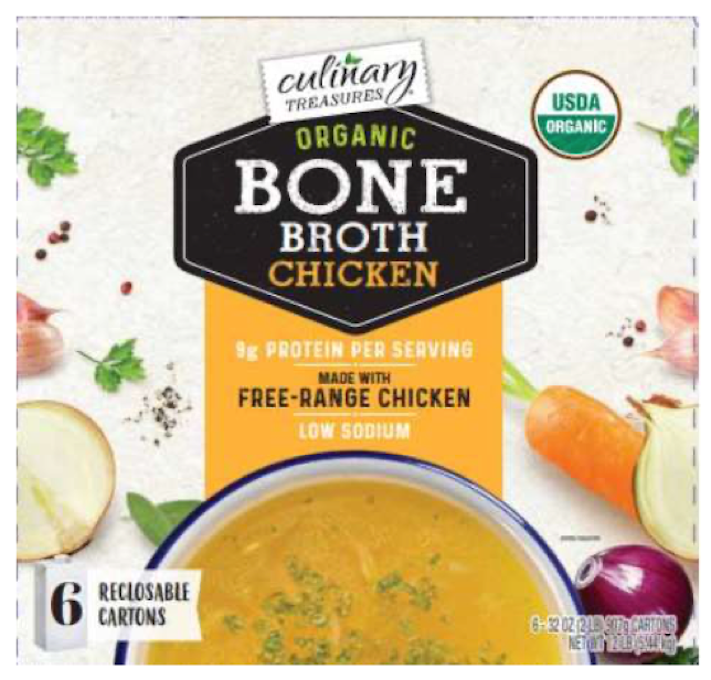
Walmart Recalls Chicken Broth: A Critical Examination of the Complexities
Factors Contributing to Food Contamination
Food contamination can occur at various stages of the production, processing, and distribution chain. In this case, the potential contamination of Walmart's chicken broth raises questions about the following factors:
1. Supplier and Production Standards:
The quality and safety of food products rely heavily on the standards maintained by suppliers and manufacturers. Inadequate hygiene practices, improper storage, and cross-contamination during processing can introduce extraneous materials or microorganisms into food products.
2. Distribution and Storage:
After production, proper distribution and storage are crucial to prevent contamination. Damage to packaging or mishandling during transportation can create entry points for contaminants. Additionally, prolonged storage at incorrect temperatures can promote bacterial growth.
3. Consumer Handling:
Consumers also play a role in preventing food contamination. Improper storage, cross-contamination in the kitchen, and inadequate cooking temperatures can create conditions favorable for the growth and spread of pathogens.
Health Concerns and Consumer Impact
The presence of extraneous materials in food products can pose severe health risks. These materials can cause choking hazards, allergic reactions, or even more serious medical complications. In the case of Walmart's chicken broth, the specific type of extraneous material has yet to be identified, but the recall serves as a precautionary measure to protect consumers.
1. Public Health Implications:
Foodborne illnesses affect millions of people worldwide each year. Contaminated food products can lead to a range of symptoms, from mild gastrointestinal distress to severe illnesses and potentially life-threatening infections.
2. Consumer Concerns:
Food recalls have a significant impact on consumer trust and purchasing decisions. The withdrawal of a product from the market can lead to concerns about the reliability of the brand and the safety of similar products. Consumers may become more cautious in their food choices and seek out alternative options from reputable sources.
Regulatory Response and Industry Standards
The Walmart chicken broth recall highlights the importance of effective regulatory oversight and industry cooperation in ensuring food safety. Government agencies such as the FDA play a crucial role in monitoring food production, setting safety standards, and enforcing compliance.
1. Food Safety Regulations:
Government regulations establish minimum standards for food production, processing, and distribution. These regulations aim to minimize the risk of contamination and ensure that food products meet certain quality and safety criteria.
2. Industry Cooperation:
The food industry has a collective responsibility to maintain public health. Companies must implement strict quality control measures, train employees on food safety protocols, and cooperate with regulatory agencies in investigating and addressing any food safety issues promptly.
Conclusion: Implications and Recommendations
The Walmart chicken broth recall serves as a timely reminder of the complex factors involved in ensuring food safety. It underscores the need for rigorous production standards, adherence to regulatory requirements, and active consumer engagement in preventing food contamination. To enhance food safety, the following recommendations are essential:
1. Enhance Regulation and Enforcement:
Government agencies should continue to strengthen food safety regulations and increase enforcement efforts to ensure compliance at all levels of the food chain.
2. Promote Industry Best Practices:
The food industry should adopt industry-wide best practices and invest in research and development to improve food safety measures, including pathogen testing and innovative packaging solutions.
3. Educate Consumers:
Consumers need to be empowered with knowledge about food safety practices, including proper food handling, storage, and cooking techniques. Public health campaigns and educational initiatives can help raise awareness and promote safe food handling practices.
4. Foster Transparency and Traceability:
Transparency in food production and distribution is crucial for quick and effective responses to food safety incidents. Traceability systems allow for timely identification of contaminated products and help limit their spread.
By addressing the complexities involved in food safety, we can create a more robust and reliable food supply system that protects public health and fosters consumer trust.

Post a Comment